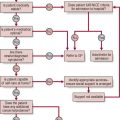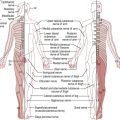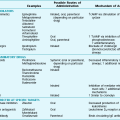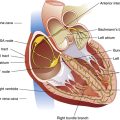Chapter 2 Assessment checklists
2.1 General assessment
An overview of a general assessment is suggested in Tables 2.1 and 2.2.
| General observations If the patient looks well, and is reading the paper – they probably are well! You still need to make sure you do not miss any significant issues |
• Condition: clean and well groomed or neglected and unkempt? • Position: in bed, chair or ambulant? • Posture: slumped or upright? Still or restless? • Weight: overweight or underweight, emaciated? • Attachments: note presence of drips, drains and equipment |
A quick check from the end of the bed can be crucial in establishing the stability of the patient
Always make sure that the patient is not in any immediate danger by assessing their Airway, Breathing and Circulation, and implementing basic life support if required
Table 2.2 General assessment: part 2
| For all assessments, it is assumed that informed consent (as appropriate) is sought and documented | |
| Database Compile initial database of key information from relevant sources, e.g. medical notes, nursing records, other staff, the patient, carers or relatives as appropriate |
|
| Subjective questions | |
PC, presenting complaint or condition; HPC, history of present condition; PMH, past medical history; DH, drug history; SH, social history.
2.2 Acute respiratory assessment
Use the systems-based checklist (Table 2.3). Your main aim is to decide whether the patient has physiotherapy-related problems (such as sputum retention, volume loss, breathlessness or respiratory failure). You also need to determine whether the patient’s condition is stable enough for your selected physiotherapy treatments. The other main purpose of assessment is to identify any deterioration in the patient’s condition and ensure that appropriate actions are taken by the healthcare team.
| Central nervous system (CNS) |
ABG, arterial blood gas; AVPU, Awake, Voice, Pain, Unrouseable; BP, blood pressure; CPP, cerebral perfusion pressure; CVP, central venous pressure; CXR, chest radiograph; ETT, endotracheal tube; FM, face mask; GCS, Glasgow Coma Scale; HR, heart rate; ICP, intracranial pressure; MAP, mean arterial pressure; NG,nasogastric; UO, urine output.
The checklist assumes that the general assessment (Tables 2.1 and 2.2) has already been followed. Specific adaptations for patients in general surgery, critical care and medical settings are then provided (Tables 2.4–2.6). Depending on the setting, different elements may need to be included or omitted (e.g. pupil size may not be monitored regularly in a rehabilitation setting but may be more important in a critical care/intensive therapy unit (ITU) or surgery setting).
Table 2.4 General surgery: specific considerations
| Database | |
| CNS | |
| CVS | |
| Renal | |
| RS | |
| MS |
CRP, C-reactive protein; PMH, past medical history; WCC, white cell count.
Table 2.5 Critical care/intensive therapy unit: specific considerations
ABC, airway, breathing, circulation; ETT, endotracheal tube; ROM, range of movement; RR, respiratory rate.
Table 2.6 Medical patient: specific considerations
COPD, chronic obstructive pulmonary disease; NIV, non-invasive ventilation.
2.3 Rehabilitation assessment
Once decisions about the patient’s immediate management have been made, use the goal-oriented and functional checklists, which focus on helping patients achieve their potential or returning them to the status they were at before they deteriorated. You must continue to ensure that your patient remains medically stable, however, and so you may still need to incorporate aspects of the systems approach. A specific checklist for acute patients in the community is also provided (see Table 2.11).
Does the patient have sufficient functional stability to remain in the community environment?
• Is patient’s mobility safe/can it be made safe to allow them to be alone for periods? (e.g. moving the bed downstairs if patient is unable to manage stairs)
• Would equipment help? e.g. commode
• How will the patient get food and drink?
• How will they get help if they need it? Do they have access to a phone and/or pull cord alarm?
Does the patient have sufficient social support to remain in the community environment?
• Who does the patient live with? Do they live alone?
• What type of accommodation does the patient live in?
• Does the patient need to use stairs, e.g. for bed/toileting?
• Do they have any social support in place already, e.g. social services, meals, local family/neighbours?
• Does the patient own the property?
• What local services are available? Where can you find out? Are they 24 hours/office hours only?
ABG, arterial blood gas; CXR, chest x-ray.
2.4 General surgery patients (Table 2.4)
• Assessment should be specific to the type of surgery.
• Initial assessment focuses on the identification of high-risk patients, according to the likelihood that they could develop cardiorespiratory or mobility complications postoperatively. Risk factors commonly considered include age, weight (body mass index), smoking, respiratory disease, upper abdominal incision and length of surgery. In some hospitals, low-risk patients are not routinely reviewed by a physiotherapist.
• Patients should be considered holistically, as reduced levels of mobility can have an impact on discharge planning.
2.5 Critical care/ITU patients (Table 2.5)
• Critical care is often considered a daunting environment to those new to cardiorespiratory care. There is lots of equipment, noise and alarms, and there may also be distressed relatives and distressing situations. However, it is the environment where there is the most support because the patients are closely monitored and there is a high ratio of nurses to patients.
• Do not be too distracted by the technology in the bed area and do not forget that there is a patient in the bed! However, appreciate that you will have to be reliant on technology to gain information for your assessment as many patients will not be able to communicate effectively.
• As part of your assessment, it is important to identify appropriate physiotherapy problems, but also to recognize that, for some patients, treatment will not be indicated. Just because a patient is on a ventilator (life support machine) it does not necessarily mean that enthusiastic respiratory physiotherapy is required!
• Be prepared for the possibility that you may have to make very quick decisions when a patient is deteriorating or becoming critically unstable. This may mean that you cannot carry out the assessment as originally intended because you may need to respond immediately to the changing circumstances.
2.7 Goal-oriented assessment (Table 2.7)
• Ask patients what their main problems/issues are and what they would like to achieve from therapy.
• Discuss and agree a manageable number of patient-centred goals and work with patients to put these into a list of priorities.
• For physiotherapy-related problems, such as functional, musculoskeletal and respiratory problems, carry out further assessment as appropriate. Assess the patient’s suitability for pulmonary rehabilitation and refer if appropriate.
• For further detail regarding goal-oriented assessment, see Further reading.
Table 2.7 Factors to be considered in goal-oriented assessment
| Musculoskeletal/neurological |
2.8 Functional assessment
Range of movement
• Check for any problem with range of movement (ROM) (ask patients, as well as observing their movement during functional activity).
• Using a table (such as Table 2.8) within your notes can be useful (insert ‘Full’ or ‘Reduced’ as appropriate).
• If limited, complete a musculoskeletal ROM assessment at affected joints.
| Range of movement | ||
|---|---|---|
| Head | ||
| Trunk and pelvis | ||
| Upper limb | Right | Left |
| Shoulder region | ||
| Elbow | ||
| Wrist and hand | ||
| Lower limb | Right | Left |
| Hip | ||
| Knee | ||
| Foot and ankle | ||
Muscle strength
• Check for any muscle weakness or signs of wasting.
• Again, a table such as Table 2.9 may be used (insert ‘Full’ or ‘Reduced’ as appropriate).
• If there is any weakness that limits function, assess muscle strength of affected muscles (see 3.41 muscle charting (Oxford grading)).
| Muscle strength | Right | Left |
|---|---|---|
| Upper limb | ||
| Lower limb |
Functional mobility
• Assess the following functions (stopping at the stage that is appropriate, e.g. if the patient cannot move from sitting to standing, do not proceed to standing or walking) – see Table 2.10.
• Many hospitals use forms/tables to document progress; Table 2.10 is an example. Insert ‘Independent’, ‘Requires supervision’, ‘Requires help’ or ‘Not possible’.
| Usual ability | Current ability | |
|---|---|---|
| Movement | ||
| Bed mobility (move up bed) | ||
| Rolling (to side lying) | ||
| Side lying to sitting | ||
| Sitting to standing | ||
| Standing balance | ||
| Walking on level ground | ||
| Walking up a hill | ||
| Walking on uneven ground | ||
| Exercise tolerance (state distance walked) | ||
| Stairs | ||
| Wheelchair mobility (if appropriate) | ||
| Self-propel chair | ||
| Transfer | ||
| Self-care and domestic activities | ||
| Washing | ||
| Personal grooming | ||
| Toileting | ||
| Dressing | ||
| Eating | ||
| Drinking | ||
| Looking after own health (e.g. taking medication and knowing what it is for) | ||
| Safety awareness in home | ||
| Shopping | ||
| Preparing meals | ||
| Housework and laundry |





